Blazoning a Coat-of-Arms
Blazoning is describing a shield in correct heraldic terms. (The illustrations used in the instruction below were created based on an example from our Bookplate Collection.)
1. |
Begin by giving the color of the field (i.e., background) of the shield. When a coat-of-arms or armorial is represented in black and white, the tinctures (i.e., colors) are indicated by various patterns (see Metals, Colors, and Furs). |
|
|
|
|
|
If the field is semé (i.e., strewn with) anything, this should be indicated now (see Semé Patterns). |
|
2. |
After the field's color has been blazoned, the next aspect to address is how any charges (i.e. the objects or ordinaries on the field — see Heraldic Charges) found on the field. If there is more than one object at the center of the shield, state the number and position of the objects (see Positioning of Charges). |
|
|
|
|
3. |
List any secondary charges which surround the main object, including their color and position on the shield.
|
|
|
|
Or on a fess between two chevrons sable three crosses-crosslet argent, a molet for difference. |
4. |
List any objects which rest on the objects described in steps 2 and 3. |
|
|
|
|
5. |
If there is a chief, a bordure, a quarter, a canton, or an escutcheon of pretense (see Ordinaries (Page 1) for chief or bordure, Ordinaries (Page 3) for quater, canton or escutcheon), indicate that now along with the item's color and any divisions which occur within it.
|
|
6. |
List any marks of cadency which are present (see Cadency Marks). |
|
|
|
|
General RBSC Hours
- Mon - Fri
- 9:30am - 4:30pm
- Sat - Sun
- CLOSED
For exceptions and Hesburgh Library information, view All Library Hours
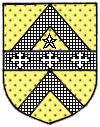
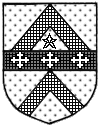
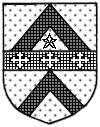
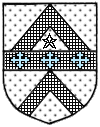
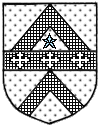

 |
| 